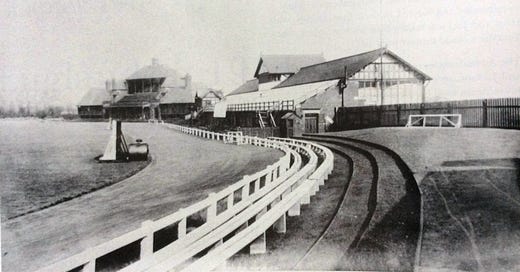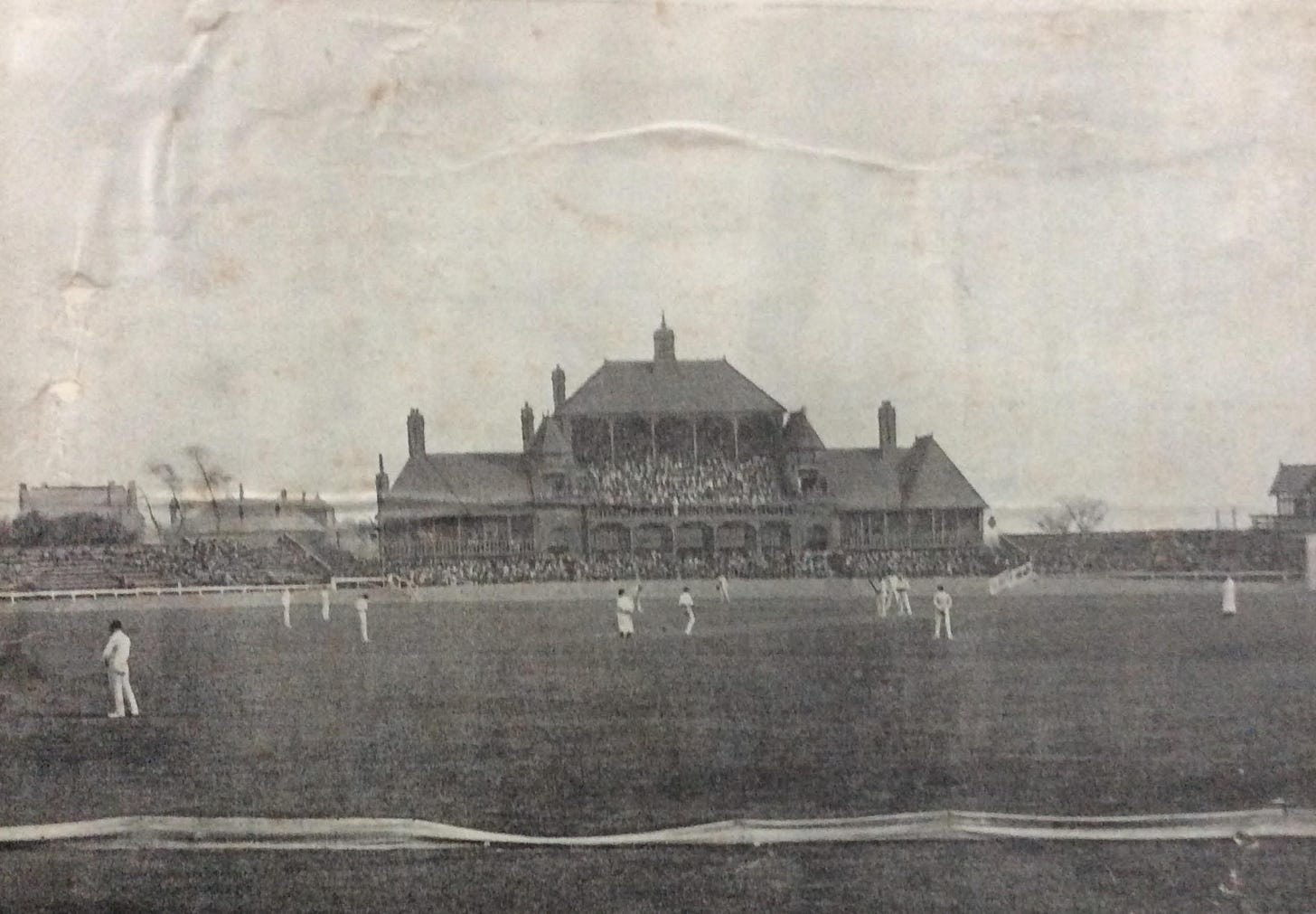The next in the ACS’s planned series of auctions takes place this month, commencing at 08:00 BST on Saturday, October 12, and closing at 10:00 BST on Monday, October 21. It will be of particular relevance to those of you with an interest in cricket in Cambridgeshire, Hertfordshire, Northamptonshire, Norfolk and Suffolk. The auction also contains some statistical material, a small selection of narrative books by EW Swanton, and a tranche of 35 lots on women’s cricket. Register now to avoid missing out.
Ah, Headingley! That hallowed ground, steeped in cricket lore, where the echoes of glories past still whisper through the stands. Let’s journey back to the year 1889, when its soil was acquired for the princely sum of £25,000 from the estate of the illustrious Lord Cardigan. Because Yorkshiremen waste no time, the first edifices rose from that soil within a few months: the pavilion, a stately structure in the south-east corner, and a grandstand, double-fronted and imposing, to separate the cricket from the rugby. The other great feature was the banked terracing in the western corner. All these were the brainchildren of the esteemed Smith and Tweedale, whose designs breathed life into the project, and gave it its enduring character.
In total, some £30,300 was lavished upon Headingley in those early years, transforming it into a veritable amphitheatre. The 22-acre site became a haven not only for cricket; it also accommodated athletics, cycling, bowling, and tennis—a living testament to the Victorian zeal for sport.
The inaugural first-class matches were played in 1892, but the pitches, like precocious artists, needed time to mature, and it was not until the summer of 1899 that Headingley could host its maiden international. The preceding Tests that summer, at Trent Bridge and Lord’s, had concluded in draws, setting the stage for a potentially decisive encounter.
Critics had initially decried the ground’s location, deeming it too remote from the thumping heart of Leeds, but the advent of a tram system quelled these concerns, allowing the eager throngs to make their pilgrimage without undue difficulty. The local press heralded the Test Match as the most significant cricketing event in the history of the North, a great milestone for the city of Leeds.
Buoyed by the memory of the record-breaking crowd (over 30,000) which had gathered to witness Yorkshire’s clash with Surrey in June 1897, the locals looked forward to the match with unbounded optimism. As it drew nearer, however, clouds began to form. Yorkshire’s own FS Jackson, a colossus of the game, threatened to withdraw for what were described as “personal reasons.” In fact, his heart was set on captaining England, and he resented the appointment of Archie MacLaren. It required all the diplomacy Lord Hawke could muster to persuade Jackson to take his place in the team.
Then, on the very eve of the match, as if the gods themselves desired to test Yorkshire’s appetite and resolve, a deluge descended, rendering the wicket a quagmire. But the players, undeterred, took the field at 11:30 the following morning. And so the stage was set for a contest that would etch itself into cricket’s annals…
If you would like to contribute to this newsletter, please either respond to the email in which you received it, or leave a comment below.






